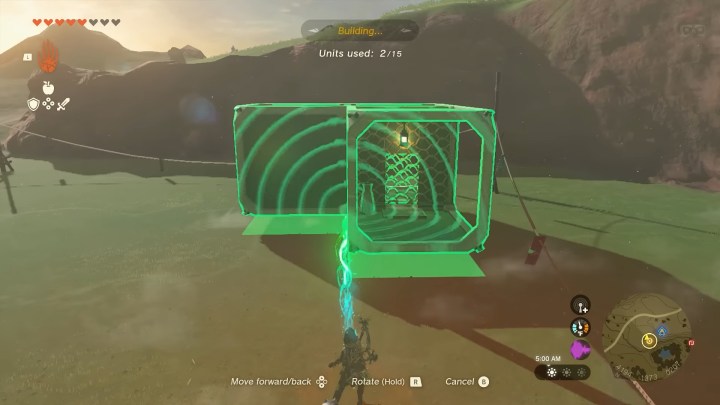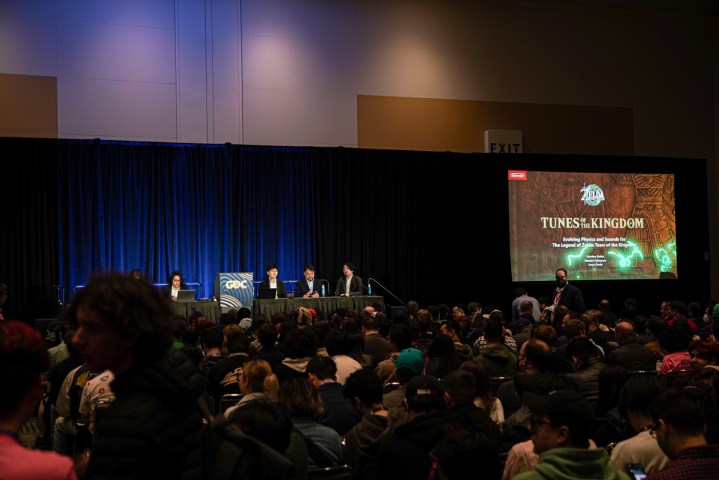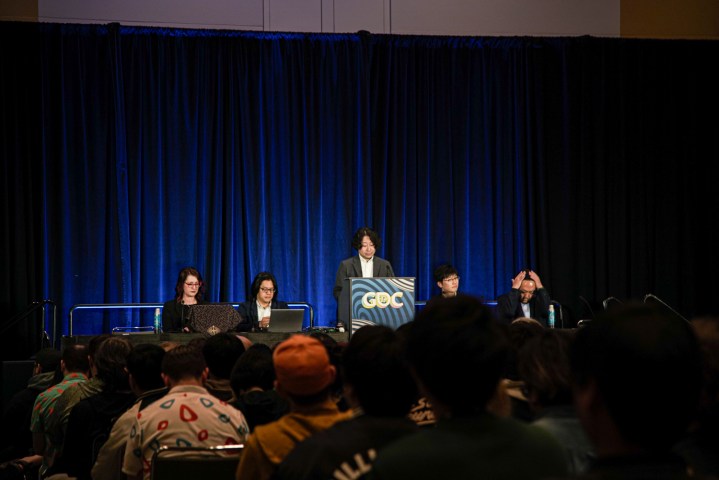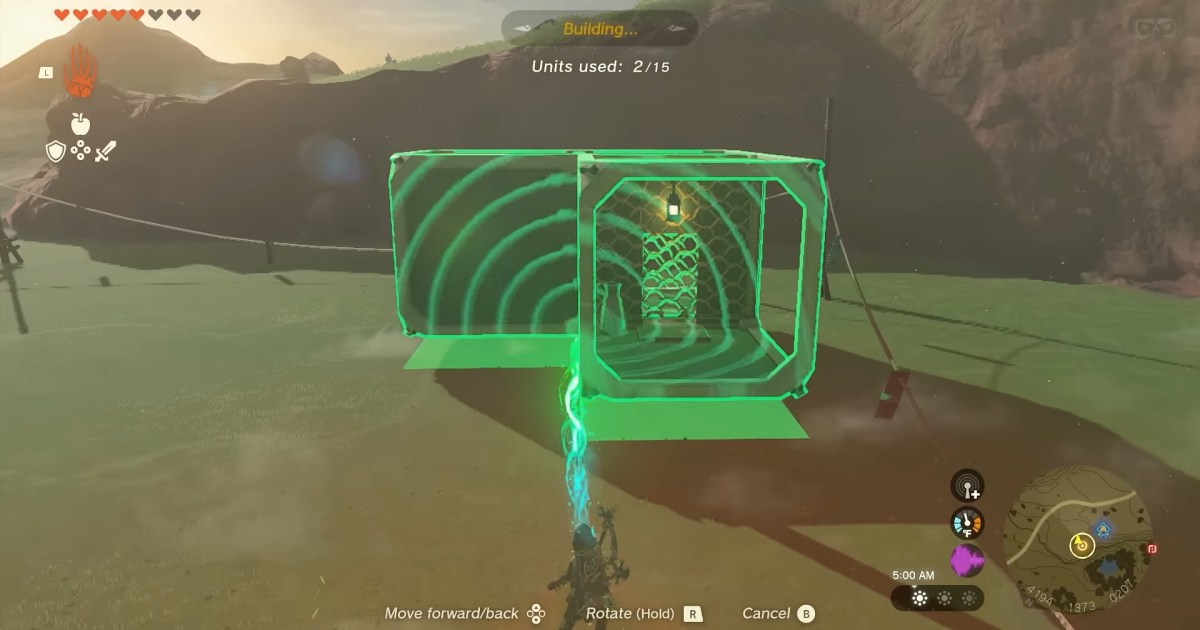
“Growth goes to be chaos.”
That was the response of Takahiro Takayama, lead physics engineer on The Legend of Zelda: Tears of the Kingdom, when he noticed the primary prototypes for 2 of the sport’s talents: Ultrahand and Fuse. The seasoned engineer, who led the physics system on The Legend of Zelda: Breath of the Wild, as nicely, knew that such a physics system was uncharted territory.
“The extra I believed, the extra I frightened,” he defined throughout a panel at 2024’s Recreation Builders Convention (GDC). This uncommon peak backstage from the builders at Nintendo reveals simply how a lot of an achievement of design and engineering the distinctive physics system actually is.
The physics of Zelda

Tears of the Kingdom has acquired close to common acclaim, and the physics system performs a crucial function in that. It’s a type of design parts you normally take with no consideration — one thing that exists within the background and infrequently comes up throughout core gameplay. For Tears of the Kingdom, nonetheless, physics are all the pieces. And on a quest to ship a real sandbox for gamers to let their creativeness run wild, physics modified all the pieces.
Why a physics system? For the event workforce behind Tears of the Kingdom, all of it comes all the way down to the idea of “multiplicative gameplay.” As a substitute of constructing enjoyable interactions, the workforce got down to create techniques the place these interactions would occur naturally. Takuhiro Dohta, who labored on the engine behind Tears of the Kingdom, defined: “Somewhat than create one thing enjoyable, create a system that makes enjoyable issues occur.”
That was the thought behind each Breath of the Wild and Tears of the Kingdom. Approaching the second recreation, the workforce needed to boost the weather the primary recreation established. This early prototyping stage caused Ultrahand and Fuse, which permit gamers to mix completely different parts to make one thing new.

It’s an awesome concept from a design standpoint, however the ones in command of truly making this method work weren’t as enthused. “I knew this was going to be very, very troublesome,” Takayama stated.
Tears of the Kingdom makes use of two layers of physics. The inspiration is Havok, a widely known physics system that’s broadly used throughout video games. Nintendo layers its personal in-house physics system on prime of this.
However these techniques on their very own weren’t sufficient. With these new talents, the physics workforce broke the sport every day, sending objects flying off the place they shouldn’t and creating conflicts that may kill the immersive expertise the workforce was after. “The conflict between these non-physics objects and Ultrahand triggered each day issues,” Takayama defined.
Initially, solely a few of the parts of Tears of the Kingdom had a real physics interplay. Takayama supplied the instance of gates and cogs as non-physics objects. These objects labored based mostly off of their animation, and so they have been inflicting numerous issues when interacting with the generally wild physics of talents like Ultrahand.
The answer? Make all the pieces a physics object.
A world of objects
As a substitute of a gate, you’d have a fabric like wooden to make up a gate, together with a motor and a sequence connected to it. Collectively, they created one thing that was bodily correct. And like that, Tears of the Kingdom was cracked huge open.
“Every little thing, with out exception, being physics-driven is critical to make multiplicative gameplay a actuality.” It acquired all the way down to the core of what the workforce was attempting to do all alongside. As a substitute of constructing devoted interactions, it will have to construct the techniques to let gamers decide what interactions they needed.

That introduced concerning the painstaking means of simulating all the pieces. A wheel is now not a wheel. It’s a wheel, linked to a motor, with its personal shaft and suspension. Chains are now not simply chains. They’re a number of chain hyperlinks, every simulated based mostly on their materials and weight, then strung collectively.
You’ll be able to’t do that manually for all the pieces within the recreation. Takayama defined that objects would have some crucial parts like mass and inertia calculated mechanically based mostly on their materials, measurement, and form. This made the world work together with itself. As a substitute of constructing techniques for objects within the water, for instance, you may calculate the buoyancy and resistance of the water and the way the mass and inertia of a physics object interacts with that.
This sounds nice in idea, however the workforce shortly ran up towards a difficulty. There was a mismatch between how an object appeared within the recreation and the bodily qualities it will tackle. Takayama supplied the instance of a wood board. It wanted to be a lot bigger to ensure that gamers to see it, which meant it was a lot heavier and didn’t work together with the world in the way in which gamers anticipated.
For these conditions, the workforce wanted to regulate the objects manually. This created a rigorously choreographed dance between recreation design, artwork, and physics to make objects that appeared like gamers anticipated and interacted with the world like gamers anticipated. The artwork workforce wanted to work with the physics workforce to make objects appear and feel proper, and everybody wanted to seek the advice of with design to ensure it made sense within the recreation.
One of many instance Takayama supplied was the Moveable Pot. Frightened that the content material of the pot would spill out if arrange on a sloped floor, the artwork workforce found out a approach to make sure the Moveable Pot was all the time flat. It used a joint on the base of the pot to rotate it when you set the article down, making certain it was all the time flat.
It’s a easy resolution, however in fact, it didn’t cease there. Gamers ended up taking the Moveable Pot and utilizing it as a joint to carry collectively monstrous automobiles, basically leveraging the techniques the workforce constructed to create one thing completely new. That’s what makes Tears of the Kingdom so particular — how gamers can take these physics objects and let their creativeness run wild.
Editors’ Suggestions




